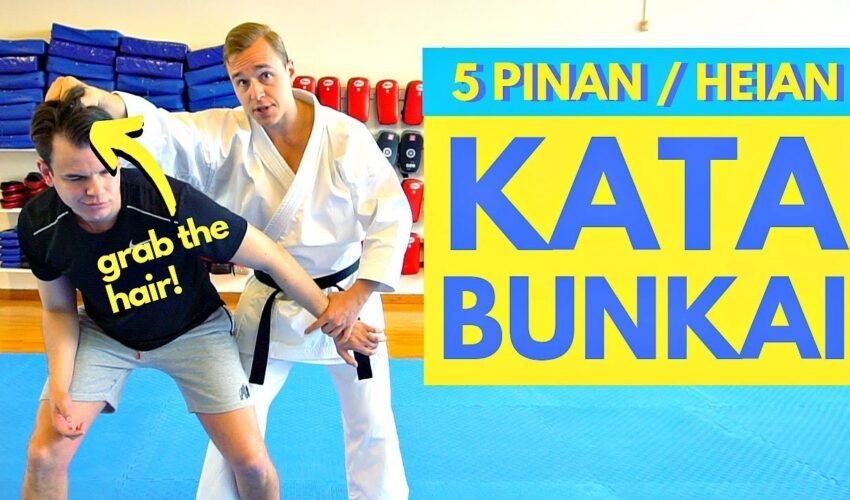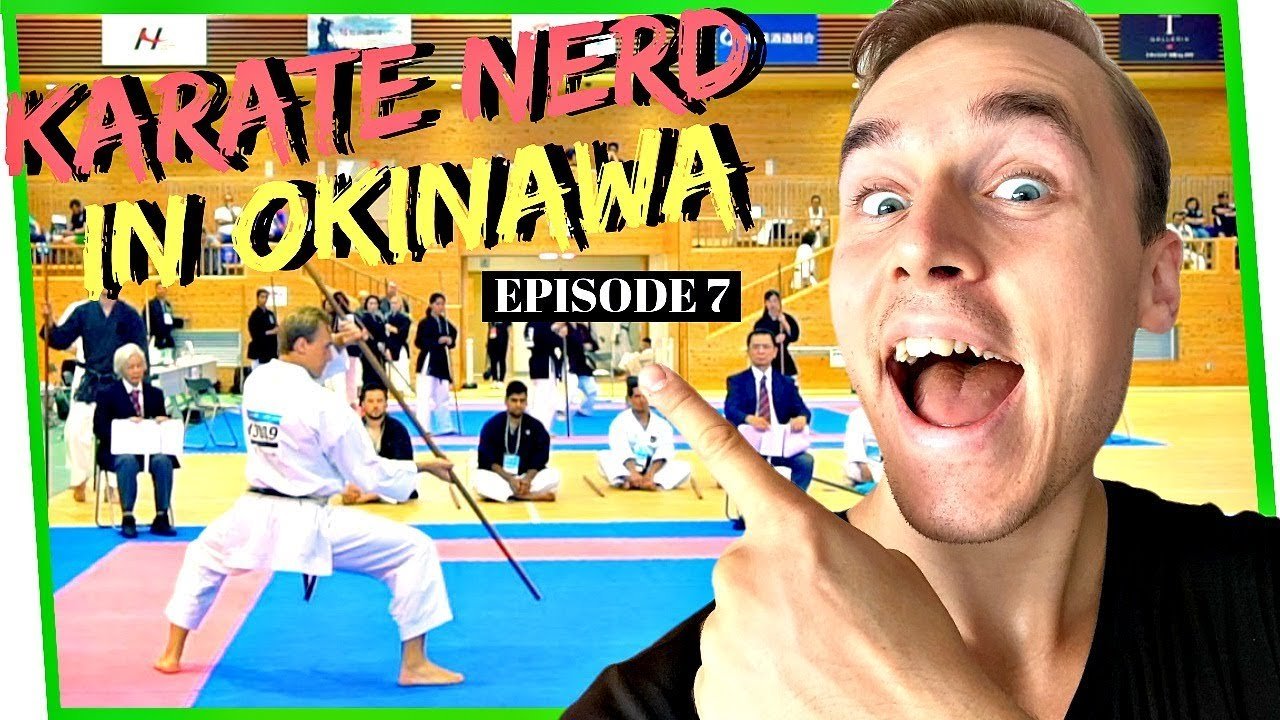Understanding Kata Applications in Karate with Jesse Enkamp
In a video titled “One Bunkai For Every Pinan / Heian Kata — Jesse Enkamp” uploaded on 2019-06-07, Jesse Enkamp, a reputed Karate practitioner, shares his insights on practical applications, also known as bunkai in Japanese, for each of the Pinan, or the Heian kata. This video has garnered a total of 150716 views.
Jesse begins by addressing the karate nerds and talks about how there are unlimited applications to the techniques used in these kata. He makes a point to mention that he will stick to the original Okinawa execution of these kata.
In his practical demonstration, he begins to work off of the first moves you do in the kata, which entail a deflection or a release from a wrist grab, followed by a punch and a takedown. He emphasizes that these moves may look a bit different in different styles.
Jesse further elaborates on how one might end up in a situation where an opponent is holding your wrists, and shares the different ways of dealing with this situation. He suggests to cross arms, slide to the side and release hands to smack the opponent in the face. He also discusses the advantages of leg positioning.
Moving on to the next Pinan kata, Jesse explains how kata are used to deal with an attack using a shuto, or sword-hand technique. He demonstrates how to utilize the opponent’s natural reaction to fend for themselves and demonstrates how to execute a basic trip or a takedown.
In his demonstration of the third Pinan kata, Sandan, Jesse shows how to use the double blocks in a practical way. The fourth kata, Yondan, is more grappling-based, he says, and demonstrates how to control the inside of your opponent’s arms or neck to stay in control of the movements.
In the end, Jesse discusses the original intent of the Pinan or Heian kata and said that its applications can be used for self-defense, which indeed is in alignment with the original meaning of the kata – to stay safe from harm.
Being a knowledgeable and influential figure in Karate, Jesse’s powerful demonstration and insightful explanation will undoubtedly aid many Karate students in understanding and implementing these techniques.
[postx_template id=”84″]
Jesse Enkamp: The Karate Nerd
Jesse Enkamp is a world-renowned martial artist, author, and inspirational speaker. Known in the global community as the “Karate Nerd”, Jesse has committed his life to the study and practice of Karate. His dedication to his craft is reflected in his numerous accomplishments, including achieving a 3rd Dan Black Belt. Enkamp is also the founder of Seishin International, a premier karate outfit maker. Aside from his work in Karate, he’s an author of several popular books about martial arts. Jesse Enkamp has truly cemented his legacy in Karate, and his passion continues to inspire others.
[postx_template id=”177″]
Practical Karate Applications in MMA and Other Fighting Sports
Karate, one of the most influential and well-known martial arts, has a rich heritage and its applications are being rediscovered even in today’s modern fighting sports. It’s widely used in Mix Martial Arts (MMA) due to its effective striking techniques. The roots of karate emphasize on practical self-defense, which can be decisively advantageous in MMA.
The Perception of Karate in MMA
Karate is often viewed as a powerful discipline within MMA and other fighting sports. This is due to the swiftness, power, and precision karateka demonstrate in their techniques. Not only does it offer a balanced approach to offense and defense, but it also enriches a fighter’s tactical strategies.
[postx_template id=”85″]
Practical Japanese Martial Arts History
The Japanese martial arts, known as Budo, finds its roots in the Samurai warrior traditions. By the 9th century, concepts like Bushido (Way of the Warrior) emerged, shaping the philosophy behind these martial arts. Techniques evolved over centuries, reflecting Japan’s unique culture and spirit of practical combat.



 (Omote, Ura, Honto)
(Omote, Ura, Honto) 






Thanks for your comments, makes me supper happy to hear! Visit my website to learn more about Karate: http://www.karatebyjesse.com
Interesting how most of these moves are Traditional Japanese Jiu Jitsu moves.
This is all derived from old jujutsu and jujutsu came from China during the Heian era. In very ancient times there wasn't much in the way of hand-to-hand combat techniques, but there were extensive weapon systems. Through time and extensive battlefield experience they realized the arms and legs could be used with the same effective strategy. This is where the sword-arm (shuto) is derived. Some styles will call this a fist, but that is incorrect, you use the whole arm as a sword. Jujutsu is literally kenjutsu with the arms. All applications and footwork are the same. This has been all but lost to time and cultural influence unfortunately…
Very beautiful video! Applications and their explanations are always extremely appreciated! Thanks
As you know as a Shito Ryu student that Pinan Shodan is the first kata that you showed as the second kata. Funakoshi changed it as he thought Pinan Shodan was a longer and harder kata to learn than Pinan Nindan. He also changed the kata name from Pinan to Heian for Japanese translation. Kuniba Shogo Soke, said that Funakoshi trained in his fathers dojo one time, and said it was too violent. All that aside, your kata resembles Shito Ryu, and not Shotokan karate and your form and kime is beautiful Sensei Jesse. OSU!!!!
This was enlightening. I had no idea the extensive use of grappling karate had. I do Thai boxing. Now it’s easier to train my clinching sweeps because of this kata. I wish more karate instructors could do the actual applications of kata like you.
One day I will be like you. I'm studying hard to know everything about karate. You are really so motivational and well informed. OSS
Excelent
Thank you for the good inspiration.
Love the bunkai techniques and oyo Sensei Jesse
I practice the pinan katas in Kosh Shorei Ryu Kempo My Sensei always made us practice bunkai at the end of kata class week, we had kempo techniques week and a jui jutsu week.
Thank you for this video! It’s very helpful as a teen instructor looking to bring variety to my classes
nice video , explained very well .. keep it the good work
Smash the face? Break the elbow!
Very good. Hadn't thot of grappling in the pinans.
I do shorin ryu matsubayashi ryu karate, and due to this bunkai video I now have more reason to perfect pinan sandan oss
oss
You did not include "death" in the ABCDE.
I really liked your pinan sandan bunkai, it's indeed much more a wrestling/grappling technique. The same movement can be found several times in the Naihanchi katas.
100%
Awesome
I am 4th Dan of TaeKwonDo JiDoKwan in Buenos Aires Argentina and I am finding the videos very interesting
Anothet excellant coverage Jesse ive mainly done Chinese kung fu and whu shu stuff little Jydo and Aikido but i find your Japanese Karate vidoes very interesting and always interesting Your joyrneys to China indonesia and Okinawa have obviously been good for you and everyone else and you are moving very smoothly in this vid Respect from Scotland
imagine if there was bunkai for shaolin forms
You are indeed a true karate genius. No one gives such tremendous insight like you do.
Nice video. I find the disconnect and missing links/ knowledge between Kata's and their practical applications one of the biggest issues in Karate. There are so many versions that are so distant from the actual techniques and even the most commonly shared ideas seem often very impractical or they do not reflect the actual motion in Kata techniques at all. I would love to see more mechanical or process engineers interpreting them
Always great videos. Your bunkai is so traditionally useful. I practiced Goju Ryu when I was younger but have trained exclusively in Japanese jujutsu since 2008, and people would be surprised to see how much of real karate is jujutsu.
kata bunkai is osom. i didi al ot of ShitoRyu in my teenage year and now that im doing Kickboxing and muay thai alot of things just flow i didnt know taht was because kata jajajaj